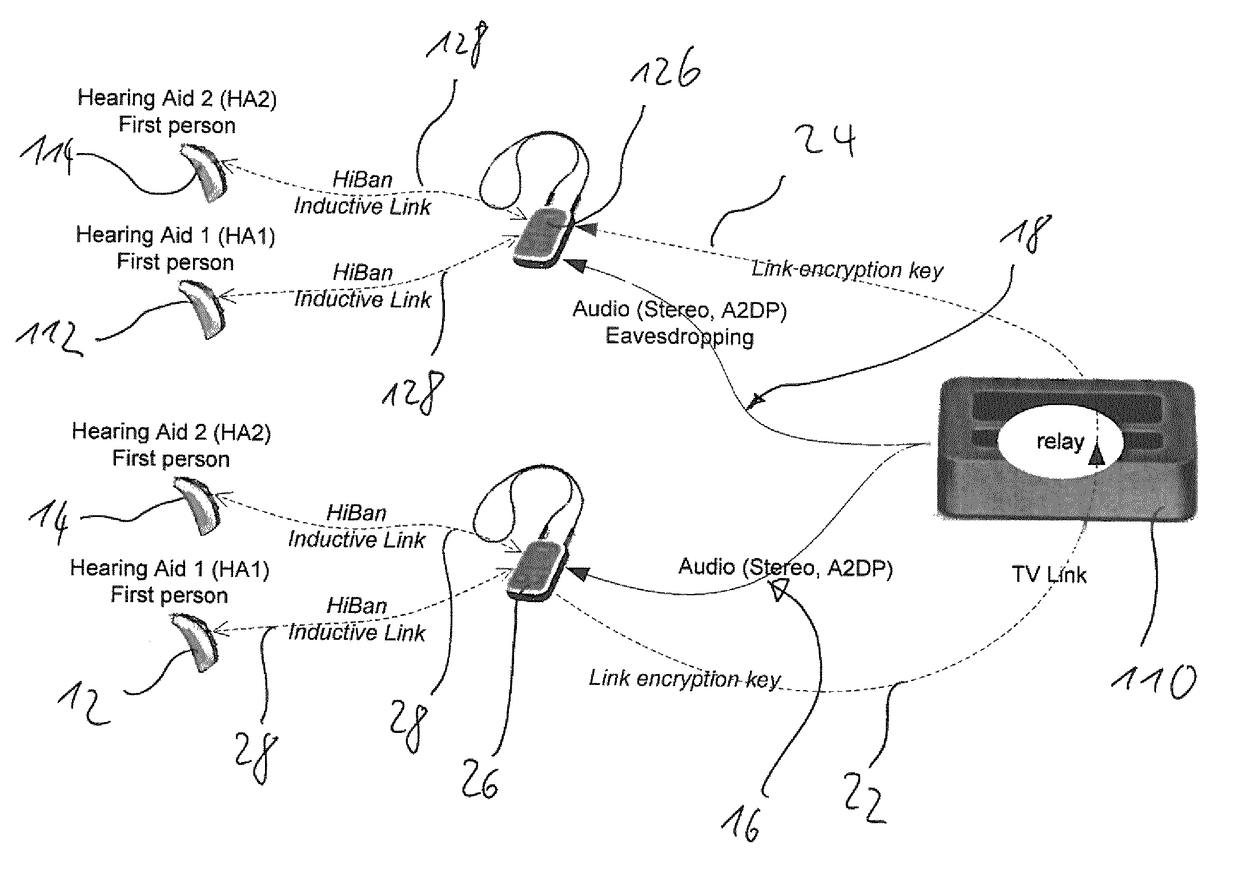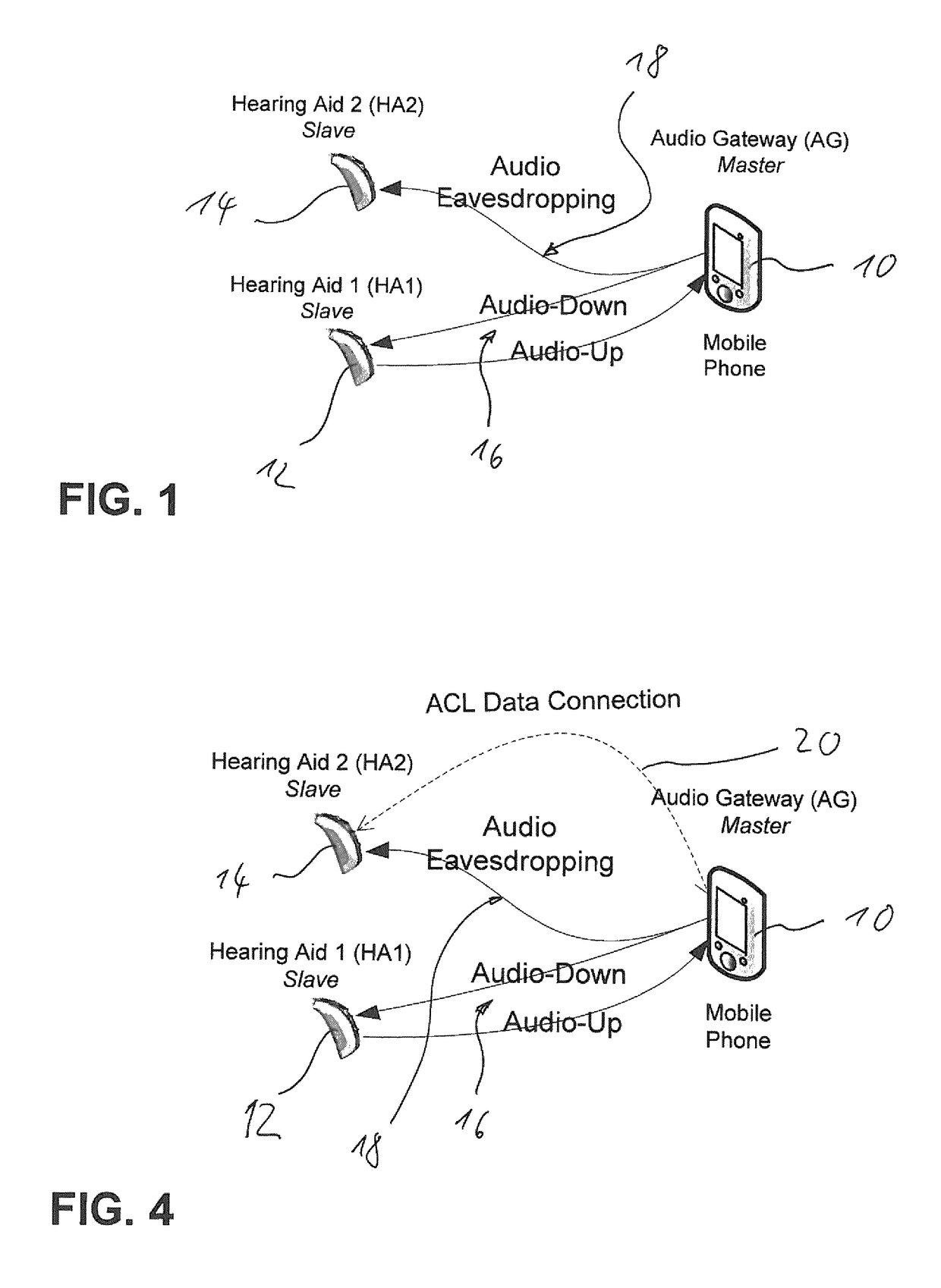Wireless streaming of an audio signal to multiple audio receiver devices
a technology of audio signal and receiver device, which is applied in the direction of wireless commuication services, synchronisation arrangements, subscription services, etc., can solve the problems of inability to connect one audio source with two audio sinks, inability to provide a wireless link between the two audio receiving devices, and inability to modify the configuration of the profile. to achieve the effect of reliable audio signal receip
- Summary
- Abstract
- Description
- Claims
- Application Information
AI Technical Summary
Benefits of technology
Problems solved by technology
Method used
Image
Examples
Embodiment Construction
[0027]FIG. 1 illustrates a first example of a system for streaming an audio signal from an audio transmission device to a first audio receiver device and a second audio receiver device, wherein the audio transmission device is a mobile phone 10 and the audio receiver devices are hearing aids 12, 14 to be worn at both ears of a user. The first hearing aid 12 is connected to the mobile phone 10 via a non-modified standard Bluetooth Classic link 16 wherein the Bluetooth link preferably uses an eSCO protocol, an A2DP profile, a headset profile or a hands-free profile for transmitting audio data from the mobile phone 10 to the first hearing aid 12. The audio protocol / profile requires repetition of transmission of an audio data packet in case of a missing positive packet receipt acknowledgement from the receiver device.
[0028]In order to establish a Bluetooth audio link, the mobile phone 10 and the first hearing aid 12 are paired and synchronized in the usual manner. Such pairing and synch...
PUM
 Login to View More
Login to View More Abstract
Description
Claims
Application Information
 Login to View More
Login to View More - R&D
- Intellectual Property
- Life Sciences
- Materials
- Tech Scout
- Unparalleled Data Quality
- Higher Quality Content
- 60% Fewer Hallucinations
Browse by: Latest US Patents, China's latest patents, Technical Efficacy Thesaurus, Application Domain, Technology Topic, Popular Technical Reports.
© 2025 PatSnap. All rights reserved.Legal|Privacy policy|Modern Slavery Act Transparency Statement|Sitemap|About US| Contact US: help@patsnap.com



